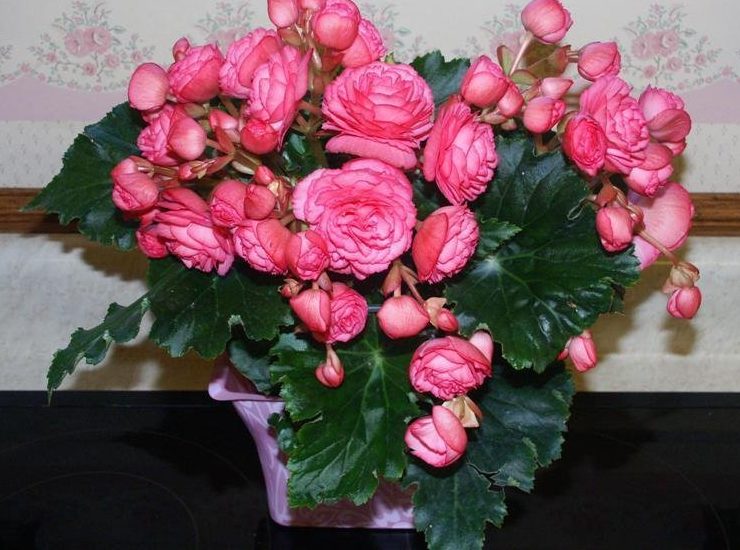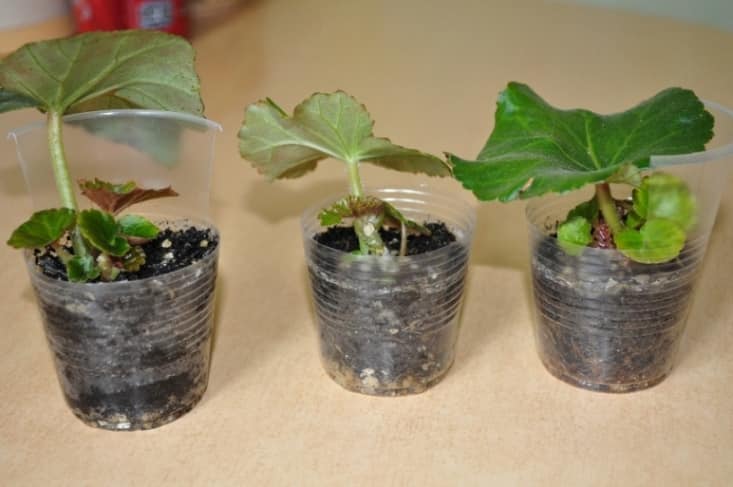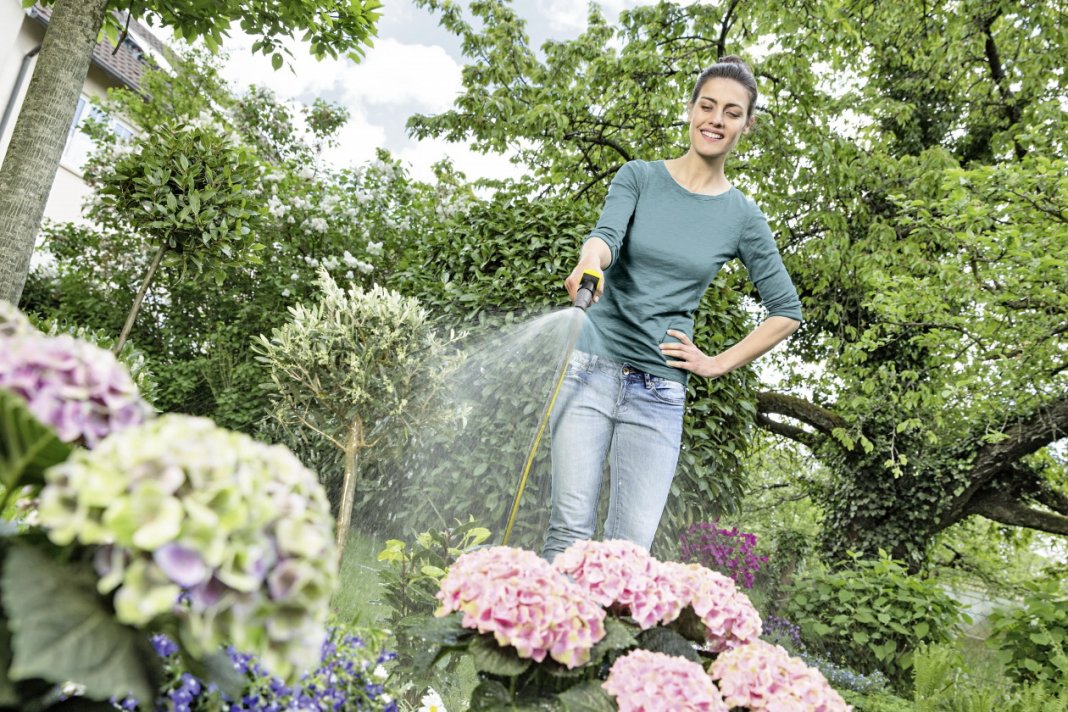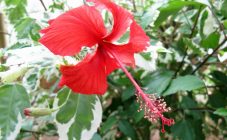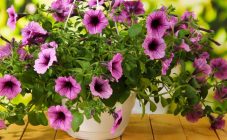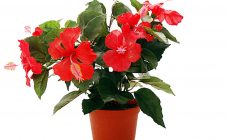Content:
The spectacular Elatior begonia will not leave anyone indifferent, home care is not very difficult. Due to its beauty, this flower is perfect as a gift, glossy bright green leaves combined with flowers will decorate any occasion.
What you need to know before buying Elatior begonia
This variety of begonia was cultivated in London by Z. Veitch in the late 19th century. The scientist crossed the sokotransky and tuberous varieties and received an excellent result: an ornamental, long-flowering plant. Begonia Elatior blooms from early autumn to late winter.
Begonia Elatior - the Latin name for Begonia Elatior (Begonia Reniformis, Begonia X Hiemalis, Begonia Rieger) is a perennial shrub. The height of the bush usually reaches 30-40 cm, the leaf is heart-shaped with uneven edges of rich green color, fleshy stems. Flowers of different colors are collected in inflorescences and can reach 8 cm in diameter. This indoor flower is native to the rainforest. This origin determines the minimum of conditions important for good growth and flowering: warmth, abundant watering and rich soils.
The Elatior begonia has several varieties, the most common of which are:
- Borias (Borias) with pale pink flowers with a white border;
- Baladin with scarlet double flowers;
- Annabelle (Annebell) with yellow flowers. It is often used as a garden plant.
Experts advise choosing plants with not fully open buds, since actively blooming begonia can shed flowers when conditions change abruptly.
When to replant after purchase
Immediately after the purchase, it is important to avoid mistakes that can even lead to the death of the plant. Begonia Elatior can be transplanted after purchase only when it has completely faded. An emergency transplant is possible if the flower is flooded with water or potted soil of questionable quality.
In all other cases, you should think about transplanting after flowering and growing new leaves. The roots, which are cramped in the pot, and they begin to crawl out, can also be considered signs of the need for a transplant.
The new pot should not be much larger than the old one. It is best to buy a special potting soil mixture for transplanting begonias in advance in a specialty store or prepare at home. This requires leafy earth (half the volume), peat and humus. A layer of sand should be poured onto the bottom of the pot.
Begonia Elatior is carefully rolled into a new pot along with an earthen lump. It is important not to damage the roots of the plant, otherwise they may start to rot.
How to propagate Elatior begonia at home
Begonia Elatior can reproduce in four ways at home:
- cuttings;
- sheets;
- seeds;
- tubers.
Reproduction by tubers is a rather complicated process, and without experience, you can destroy the entire plant.
Growing from seed is difficult because Elatior begonia is a hybrid and it is impossible to collect seed from most varieties.
To use the leaf for propagation, it must be cut off from the cutting and placed in a glass of water. As soon as the roots appear, the plant should be planted in the ground.
But the most popular way to breed Elatior begonias is by cuttings.
Propagation of begonia Elatior by cuttings
This method is most effective and gives quick results. For cuttings, it is better to choose a period of active growing season - spring or summer. It is believed that cuttings rooted in summer give short shrubs that do not have time to grow before flowering.
Cutting preparation
Required tools and materials:
- a disinfected knife or pruner;
- rooting stimulant or heteroauxin solution.
For rooting, choose apical cuttings with a pair of leaves and buds, the required length is about 8-10 cm. Cut the cutting from the mother plant at an angle of 45 °. After slightly drying the cut in air, you should dip the cutting into a rooting stimulator or leave it in the prepared solution overnight.
Rooting
A small transparent container, such as a plastic cup with holes to remove excess water, is best for rooting the cuttings. A drainage layer of expanded clay is laid at the bottom. Wet vermiculite, perlite or sphagnum are well suited as a soil. The prepared stalk should be deepened at a slight angle by 2-3 cm, and covered with a jar on top. It is important not to forget to ventilate the plant every day and not let the soil dry out.
Planting seedlings
After the roots are sufficiently strong, Elatior begonia can be planted in separate pots with a diameter of about 8 cm. Soil, perlite and vermiculite are taken as soil in equal proportions.
How to care for Elatior begonia at home
Begonia Elatior is a very delicate plant, so it is worth providing all the necessary conditions and, if possible, not exposing the flower to stress.
Lighting
Optimally position the Elatior begonia on windows facing east or west. This way, the lighting will be sufficient, but without direct sunlight. If placement is possible only on the southern windows, the plant should be covered and partial shade should be created. From the excess of the sun, the flowers become small and pale, and in the double varieties, the number of petals decreases. In winter, additional lighting is not needed.
Temperature and humidity
The suitable temperature for keeping Elatior begonia is 18-20 ° C. At lower levels, the flower stops growing and can drop buds. If low temperatures are maintained for a long time, the plant can develop root rot. Begonia must be protected from drafts and sudden changes in conditions of detention.
Spraying begonia is not recommended. To maintain the required humidity, it is better to place the pot on a pallet filled with moist expanded clay. Leaves can be wiped off dust with a damp cloth or brush.
Watering
The main rule is to underfill rather than overfill. It is recommended to wait for the earthen coma to dry in half, only then water the plant. If the water stagnates, stems or roots may rot.
Top dressing
For feeding, complex fertilizers based on minerals are used, which are applied half of the amount specified in the instructions. During the period of active growth and flowering, fertilizers are applied regularly, every 10 days.If the plant is transplanted into new soil, feeding should be postponed for at least 2 months.
Organic fertilizers should not be used, as the nitrogen contained in them makes the stems of the plant brittle and transparent, and the flowers are less spectacular.
The soil
Begonia Elatior, like all representatives of begonias, is picky about the composition of the soil, so it is advisable to use only special soil mixtures. The substrate should be nutritious and coarse, deciduous soil with peat, humus and sand is best suited.
Transfer
Caring for Elatior begonia at home necessarily includes a transplant. Each spring, you need to transplant the plant into fresh soil. It is worth making sure that the root collar is always above the surface, otherwise the flower may begin to rot.
When to prune Elatior begonia
Pruning is necessary to maintain health and form a beautiful crown of the plant. For the first time, a young plant is pruned when it reaches a length of 7 cm, thereby stimulating the growth of lateral shoots. It is recommended to reduce watering until fresh leaves appear.
When the side shoots reach 10 cm, they are pruned again. The cut should be above the bud on the outside of the stem. Further pruning is done as needed.
What to do after flowering begonia Elatior
No special measures are required after the end of the flowering period; it is enough to remove the empty flower stalks. If the plant has grown a lot, you can prune and root the cut shoots. What to do with the handle further is described above.
From the article it is clear that Elatior begonia is a wonderful flower for decorating home windowsills. However, it needs a kind of care, which consists of the selection of a suitable place, timely watering and top dressing. If you follow the rules above, then begonia will bloom for a long time, pleasing the eye of the grower.


